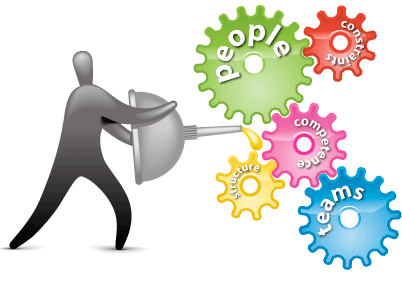 A Well-Worn Cliché: Change is the Only Constant
A Well-Worn Cliché: Change is the Only Constant
As Agile practices continue to evolve and adapt to various industries and contexts, it’s essential to pause and reflect on whether the core principles and intentions of Agile are still intact. Recently, Jason Little published a thought-provoking article 4 Old School Agile Mantras that Change Agents Should Be Stealing, where he hinted, ok, downright stated, that The Agile may have lost its way as it evolved into a Big Bu$ine$$ somewhere around 2012. He suggested an approach to rediscovering the essence of Agile.
For those who may not be familiar with Jason, he’s the Grand Poohbah of Lean Change and the author of Lean Change Management: Innovative Practices For Managing Organizational Change. His article served as a catalyst for Chris Murman and me to reach out to him and have a chat to revisit the roots of Agile and ponder the idea of reviving those old-school Agile mantras.
Has Agile Lost its Way?
Our discussion began with a simple question: Has Agile lost its way in the corporate world? We quickly realized that this was a sentiment shared by many in the Agile community. As organizations began embracing Agile methodologies en masse, the original intentions, values, and principles of Agile seemed to be overshadowed by process-driven frameworks and certifications.
Agile, which initially focused on individuals and interactions over processes and tools, appears to have morphed into being more about adhering to specific frameworks and methodologies like Scrum, Kanban, or SAFe. The Agile Manifesto, with its four value statements and 12 principles, seems to be taking a backseat to corporate agendas.
Old-School Mantras – Rediscovering the Essence of Agile
So, how do we reclaim the essence of Agile and ensure that it remains true to its roots? Jason suggested that one way to reignite the spark of Agile is by revisiting some old-school Agile mantras that may have been forgotten over the years. Summaries of the four are below, and you can read more including “How to steal this for change” in Little’s article.
- YAGNI (You Aren’t Gonna Need It): This mantra reminds us to prioritize simplicity and avoid over-engineering. It encourages teams to focus on delivering what’s necessary rather than adding unnecessary features or complexity.
- Last Responsible Moment: Agile encourages us to defer decisions until the last responsible moment. This mantra underscores the importance of making informed choices when the most relevant information is available.
- Firing a Tracer Bullet / “Walking the Dog”: By firing a tracer bullet or “walking the dog,” teams gain a deeper understanding of a problem before diving into development. This approach promotes clarity and reduces the risk of costly mistakes.
- Yesterday’s Weather: Reflecting on past performance and outcomes, teams can make more informed decisions for the future. This mantra emphasizes the value of analyzing historical data to guide future actions.
Restoring the Authenticity of Agile
During our conversation, additional ideas emerged that can help us restore the essence of Agile and maintain its authenticity amidst evolving practices and the pressures of today’s business environment:
- Humility and Empathy: Agile was built on the foundation of respect, trust, and open communication. Practitioners must remember that Agile isn’t just about following a set of rules but also about treating people with kindness and understanding. Humility and empathy can go a long way in fostering collaboration and innovation.
- Saying “I Don’t Know”: In a world where experts are highly valued, admitting that you don’t have all the answers can be challenging. However, Agile practitioners should embrace the idea that they don’t have to know everything. Saying “I don’t know” can be a starting point for learning and improvement. (See related article: Stop Giving Answers: Ask Powerful Questions Instead)
- Focus on Individuals and Interactions: The Agile Manifesto places significant emphasis on individuals and interactions. We discussed the importance of nurturing strong team dynamics, building trust, and fostering an environment where everyone feels safe to contribute their ideas. These aspects should never be sacrificed for the sake of processes and tools.
Core Values and Principles
As we concluded our discussion, it became clear that there’s still a place for these old-school Agile mantras in our ever-evolving Agile landscape. They serve as reminders of the core values and principles that Agile was founded upon.
The intention behind revisiting these mantras isn’t to reject progress but to strike a balance between structure and flexibility, processes and people, and methodologies and values. Agile should adapt to the needs of organizations, not the other way around.
Incorporating these old-school mantras into our Agile practices can help us rekindle the spirit of Agile, ensuring that it remains a framework focused on delivering value, fostering collaboration, and continuously improving – just as it was intended to be.
So, if you’re curious about how these old-school Agile mantras can breathe new life into your Agile journey, I encourage you to tune in to the recording of our convo. Join us on the journey to rediscovering the essence of Agile.
Read More
4 Old School Agile Mantras that Change Agents Should Be Stealing

 A Well-Worn Cliché: Change is the Only Constant
A Well-Worn Cliché: Change is the Only Constant